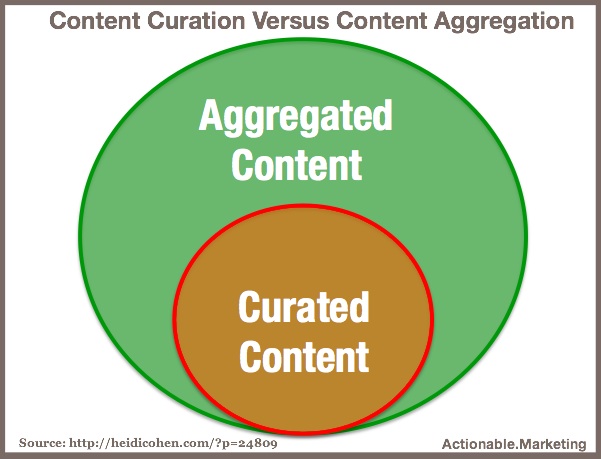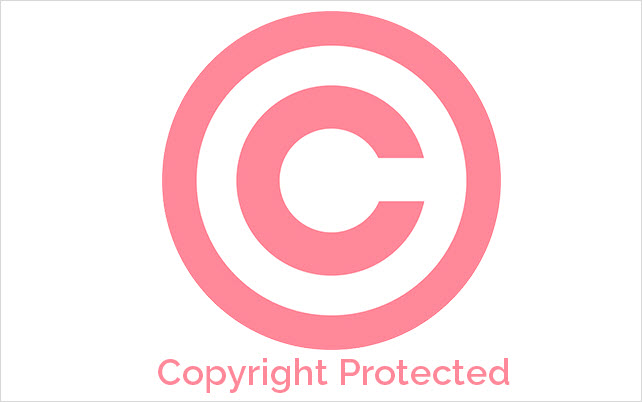7 Content Curation Myths You Should Avoid

Content curation is a great way to create quality articles, while at the same time sharing relevant content with your readers. However, there are numerous misconceptions.
Isn’t it just copy and pasting? Or duplicate content? And even worse ‘stealing’?
Beth Kanter defines content curation as, “The process of sorting through the vast amounts of content on the web and presenting it in a meaningful and organized way around a specific theme. The work involves sifting, sorting, arranging, and publishing information.”
So where is the confusion?
Even with evidence of the numerous benefits there are still marketers that have not jumped on board.
Could this be a result of misconceptions? Lack of clarity or information that really explains the right way to curate. Or possibly getting trapped by ill founded myths that surround this fairly new concept.
Let’s try to put some of these myths to rest by further examining the most common ones.
Content Curation Myths
Myth 1: Content Curation is Merely Automated Aggregation

Image Source: Content Curation Versus Content Aggregation
A lot of confusion seems to arise from the term aggregation. Many people believe that content curation and content aggregation are synonymous. In actuality this could not be further from the truth.
Content aggregation, which is most often automated, is a way of pulling together other peoples content and syndicating it to a number of channels that you own. These channels can include both blogs and social media sites.
With content curation you are adding value to the snippets of content that you are gathering. Essentially, including your voice throughout and in some cases even refuting the position of the original author.
Now where it gets even more confusing is with many of the software platforms designed to help with curating content.
Some content curation programs do automated roundups of content with little interaction on your part. Although there may be no value added (your own insights) in an automated aggregation process, you shouldn’t rule it out completely.
Tasia Gonsalves-Barriero recently wrote, “There is no better way to customize the content for your audience than by adding some human involvement.”
So even if you are using a software that helps to pull together great snippets of content don’t just leave it at that. Weave in your own thoughts, views and opinions. Let the reader know why it is important. Use the snippets to reinforce your position. It is the combination of valuable content snippets meshed with your voice that defines content curation not the simple act of just copy and pasting content.
Myth 2: Content Curation is Stealing

Some marketers are gun shy about curating content because–in part–they’re concerned about the legalities of sharing others’ content. But remember, this is the internet, and content creators want their articles, news, images, and videos circulated. That means it’s okay to share—provided that you follow a few best practices.
Rebecca McIntyre says that, “Your number one rule of thumb is that it’s important to give credit to your sources, including links back to the main source. And, it’s also key that you add your own expertise when you present links to other sources to contribute value and help you differentiate.”
The important thing to remember here is that stealing implies that you are claiming ownership. If you are copying other people’s content and not giving credit to them as the author then ‘yes’ it is stealing. However, content curation has nothing to do with stealing and everything to do with sharing.
Myth 3: Content Curation is Quick
Quick content curation is not a myth in many industries. This is especially the case for niches Internet marketing, pop culture, and fitness. However, quick content curation is not always the case for some unlucky industries. Highly technical or obscure fields might have to spend a lot longer hunting down gems in their industry, especially if there are very few sources of good content available.
To summarize this point, what makes content curation take more time in some niches is the limited number of available resources. This means that you are spending more time simply surfing the internet.
The key however is to find the most authoritative sites within your industry then rather than simply curating from the snippets themselves also curate from conversations. This can be from within the blogs themselves or from social media sites. Find out what others are saying about the topic. You can then support or reject their position and create a highly engaging piece of content.
Myth 4: Content Curation is Unimaginative and Lazy

Some online influencers believe material curation is a waste of time. However curation functions rather well when done properly.
Brittany Thomas says that by curating you’ll be aiding your audience in getting what they need, white at the same time helping you attain your material advertising and marketing goals if you do it right.
She continues by recommending that you should identify exactly what material you want to curate by guaranteeing it’s something that really matters to your consumers. Seek only the ideal sources, and add value to that material by discussing why it is essential and why it matters to your viewers.
Curating content is far from being lazy. It requires a keen eye for selecting bits of content that will have meaning, provide value, and be highly relevant to your client. It also implies that you fully understand the needs of your follows and want to cater to those needs. Content curation is part science and part art and those who are really good at it will reap the rewards.
Myth 5: Content Curation is All Automated
“Yes. That is indeed the dream…having all the best content in one place without the painstaking ordeal of picking and choosing every noteworthy topic. However, we haven’t found this simple a solution yet” says Rohit Roy.
There are certainly a number of tools that help with the curation process. For example, Kudani allows you to build RSS feed libraries that you can search internally within the app by keyword. You can do this per blog or per niche. This makes finding relevant content from high authority sites much easier.
In addition, you can search for trending content and see the amount of social engagement over periods of time such as 30, 90, or even the last 180 days. Get more traffic to your sites by tapping into topics that people are already talking about.
While these examples are not fully automated they do simplify the process immensely. They automate the gathering of content, whereby you can then draw from that content to create curated posts that your readers will love.
Myth 6: Content marketing has no ROI
Don’t tell non-profits that Change.org and charity: water are two organizations crafting compelling, often multimedia content experiences designed to inspire action. Both have seen success drawing audiences to the content with effective headlines, and by providing clearly delineated opportunities for audiences to convert to donors, oftentimes in the same page view.
Targeting your goals with the right content and distribution strategy is a valuable skill: one that sets up campaigns for success rather than disappointment. Engagement may be a “soft” metric, but without it, conversions and increased sales will remain remote outcomes. Tracking indicators like bounce rates, time spent, and page views per session are the first signals that your content is resonating with audiences at all.
Tom Foran say that, “As content marketing evolves, a brand is in the great position to lead its respective categories and the industry as a whole with innovative strategies and applications of its content. It starts with moving beyond what you think you know about content and how audiences interact with it, as well as taking risks to distinguish your brand from an increasingly crowded field.”
Myth 7: Content Curation is Unethical
There is a huge difference between curating content and “pirating” content! Here are some ethical guidelines to help you out:
- Give tribute to the original content owners by mentioning their names linking to their content sources
- Do NOT republish an entire third party story and make it your own. Simply quote few paragraphs or summarize parts of the content, making a clear reference to the content owners
- ALWAYS create DOFOLLOW links to their content and rest assured that your SEO will remain intact
- Finally, add value to the original post by offering your own tips and insights on the topic discussed. Intelligently building on curated content makes your final output authentically yours. I love that thought!
Also let’s not forget about what the law says when it comes to fair use.
The Fair Use legal doctrine promotes freedom of expression by permitting the unlicensed use of copyright-protected works in certain circumstances. Section 107 of the Copyright Act provides the statutory framework for determining whether something is a fair use and identifies certain types of uses – such as criticism, comment, news reporting, teaching, scholarship, and research – as examples of activities that may qualify as fair use.
Section 107 calls for considerations of the following four facts in evaluating a question of fair use:
- Purpose and character of the use, including whether the use is of a commercial nature or is for nonprofit educational purposes.
- Nature of the copyrighted work.
- Amount and substantiality of the portion used in relation to the copyrighted work as a whole.
- Effect of the use upon the potential market for or value of the copyrighted work.
Conclusion
The myths that surround content curation, or rather those that buy into these myths, are missing out on a huge opportunity. Content curation is one more tool that you can add to your arsenal that will aide in positioning you as an authority in your respective niche. When you present meaningful content to your followers with your insights not only will they get to know you, but they will get to know what you stand for.
Make sure that when you are curating content you are adding value. Remember it is not simply the act of copy and pasting. And take time to understand the legalities. Content curation is not stealing. Content that others write is meant to be shared, so share it but don’t forget to give credit to the original author. After all you would want others to treat your work this way.
And remember, that while in some industries content curation may be quite fast in others it may take time to find the right sources to pull from. Use your imagination to find other places where people may be discussing the content and curate from that. Lastly, it is not a lazy form of writing but rather one that requires a specific skill set. Use tools like Kudani to help gather and organize content so that you can pull together rich snippets more quickly.













